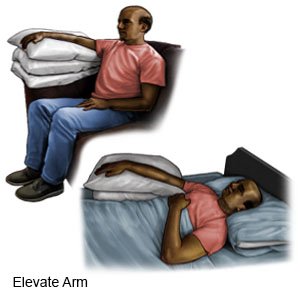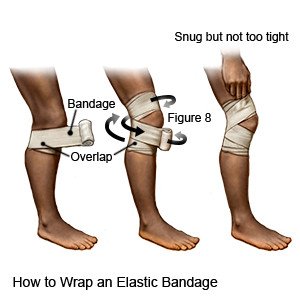Pain Management in Children
Medically reviewed by Drugs.com. Last updated on Aug 4, 2025.
Pain management includes medicines and therapies to treat pain from a surgery, injury, or illness. Pain can cause changes in your child's physical and emotional health, such as depression and sleep problems. Pain management may help your child rest, heal, and return to daily activities. Pain management can also help increase your child's appetite, sleep, and energy, and improve his or her mood.
DISCHARGE INSTRUCTIONS:
Call your child's doctor or pain specialist if:
- Your child's pain does not get better, or he or she has new pain.
- Your child is tense and not able to relax because of his or her pain.
- You have questions or concerns about your child's condition or care.
Medicines:
Your child may need any of the following:
- Acetaminophen decreases pain and fever. It is available without a doctor's order. Ask how much to give your child and how often to give it. Follow directions. Read the labels of all other medicines your child uses to see if they also contain acetaminophen, or ask your child's doctor or pharmacist. Acetaminophen can cause liver damage if not taken correctly.
- NSAIDs , such as ibuprofen, help decrease swelling, pain, and fever. This medicine is available with or without a doctor's order. NSAIDs can cause stomach bleeding or kidney problems in certain people. If your child takes blood thinner medicine, always ask if NSAIDs are safe for him or her. Always read the medicine label and follow directions. Do not give these medicines to children younger than 6 months without direction from a healthcare provider.
- Prescription pain medicine may be given. Ask your child's healthcare provider how to give this medicine safely. Some prescription pain medicines contain acetaminophen. Do not give your child other medicines that contain acetaminophen without talking to a healthcare provider. Too much acetaminophen may cause liver damage. Prescription pain medicine may cause constipation. Ask your child's provider how to prevent or treat constipation.
- Steroids decrease inflammation that causes pain.
- Anesthetic medicines may be injected in or around a nerve to block pain signals from the nerves.
- Muscle relaxers help decrease pain caused by muscle spasms.
- Antidepressants or anticonvulsants may be used to treat nerve pain.
- A pain cream, gel, or patch may be applied to the skin on painful areas.
- Do not give aspirin to children younger than 18 years. Your child could develop Reye syndrome if he or she has the flu or a fever and takes aspirin. Reye syndrome can cause life-threatening brain and liver damage. Check your child's medicine labels for aspirin or salicylates.
- Give your child's medicine as directed. Contact your child's healthcare provider if you think the medicine is not working as expected. Tell the provider if your child is allergic to any medicine. Keep a current list of the medicines, vitamins, and herbs your child takes. Include the amounts, and when, how, and why they are taken. Bring the list or the medicines in their containers to follow-up visits. Carry your child's medicine list with you in case of an emergency.
Related medications
Prescription pain medicine safety:
Your child's healthcare provider will give you specific instructions based on the medicine your child is taking. Instructions will include how to dispose of medicine your child did not use. The following are general guidelines:
- Give your child medicine as directed. Give only the amount prescribed or recommended. If your child uses a pain patch, remove the old patch before you place a new one. Ask your child's provider before you stop giving your child prescription pain medicine that he or she has been taking for longer than 2 weeks. A sudden stop may cause serious health problems.
- Follow safety guidelines. Some medicines can cause drowsiness, slowed breathing, or concentration problems. Do not allow your adolescent to drive or operate heavy machines while he or she uses prescription medicines. Give your child pain medicine 30 minutes before exercise or physical therapy, or as directed.
- Manage side effects. Some food and other medicines may cause side effects when combined with pain medicine. Your child's provider will tell you what to do if your child has any side effects.
Ways to help your child manage pain without medicine:
- Have your child rest as often as needed. Rest helps your child's body heal. Help your child sleep in a comfortable position. Examples include sleeping upright or on his or her side. Use pillows to support painful areas. Tell your child's healthcare provider if pain is keeping your child from sleeping well.
- Apply heat or ice as directed. For heat, use a heat pack, heating pad set on low, or a warm washcloth. Apply heat for 20 to 30 minutes every 2 hours for as many days as directed. For ice, use an ice pack, or put crushed ice in a plastic bag. Cover the bag with a towel before you place it on your child's skin. Apply ice for 15 to 20 minutes every hour or as directed.
- Elevate the painful area above the level of your child's heart, if possible. This will help decrease swelling and pain. Prop your child's painful area on pillows or blankets to keep it elevated comfortably.

- Apply compression with an elastic bandage as directed. Wrap an elastic bandage around the area. Do not wrap the bandage tightly. You should be able to put 2 fingers between the bandage and your child's skin.

- Ask about pain management techniques and devices. Relaxation exercises, music therapy, or aromatherapy may help your child relax. Distraction or guided imagery can help your child focus on something other than his or her pain. Massage therapy helps relieve tight muscles. Transcutaneous electrical stimulations (TENS) uses mild, safe electrical signals to help control muscle or nerve pain.
Follow up with your child's doctor or pain specialist as directed:
Tell the doctor or specialist if your child's pain is continuing or getting worse. Include all the therapies your child is using, and if any works better than others. Write down your questions so you remember to ask them during your visits.
© Copyright Merative 2025 Information is for End User's use only and may not be sold, redistributed or otherwise used for commercial purposes.
The above information is an educational aid only. It is not intended as medical advice for individual conditions or treatments. Talk to your doctor, nurse or pharmacist before following any medical regimen to see if it is safe and effective for you.
Further information
Always consult your healthcare provider to ensure the information displayed on this page applies to your personal circumstances.
